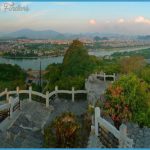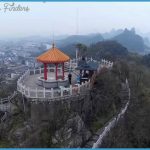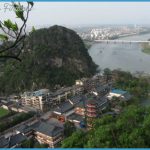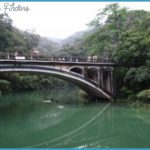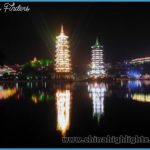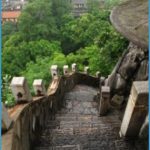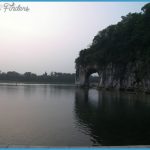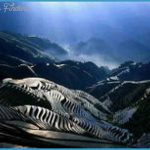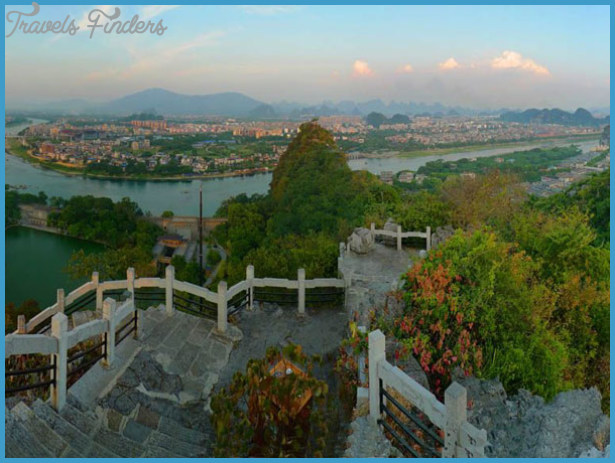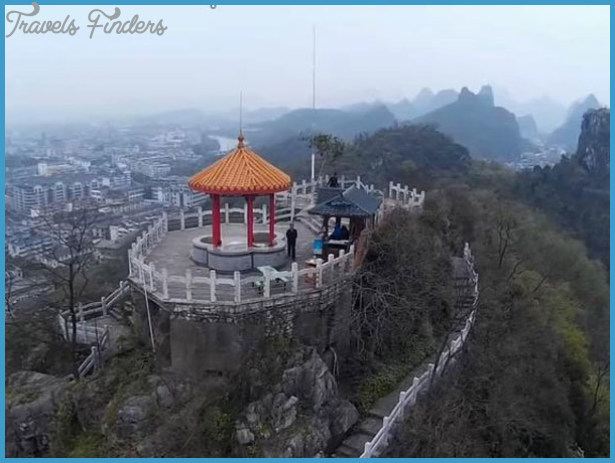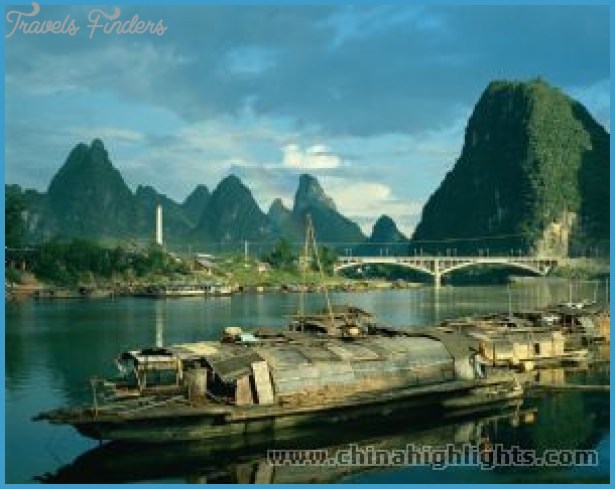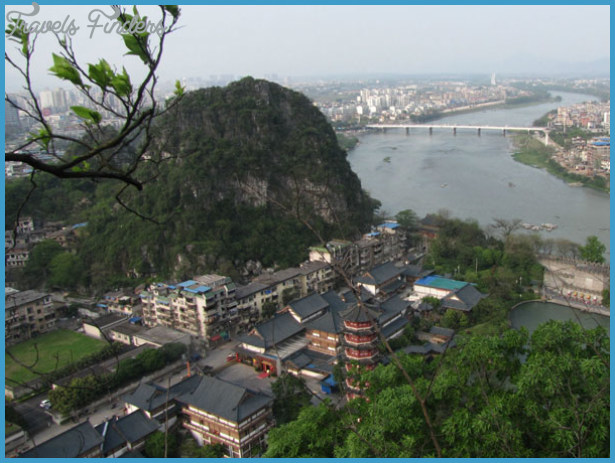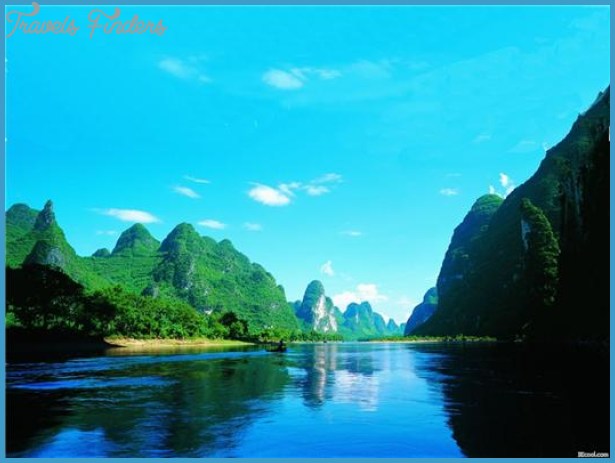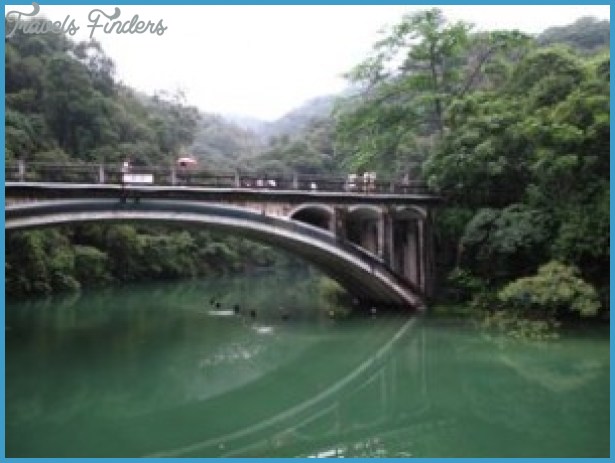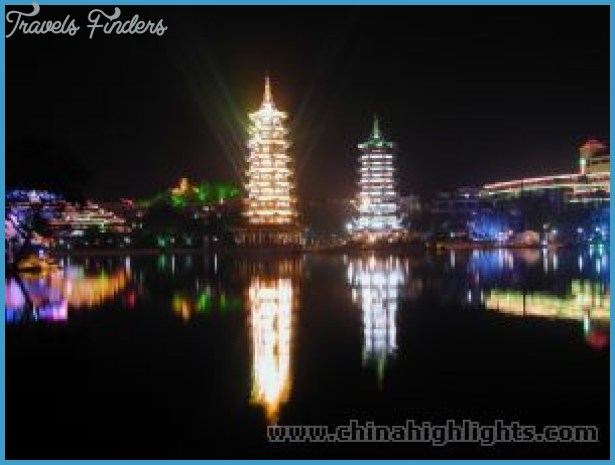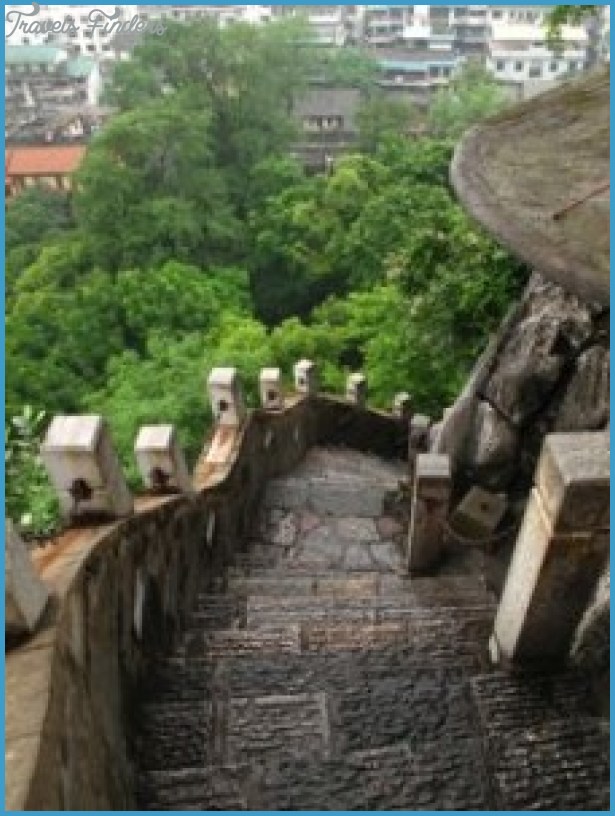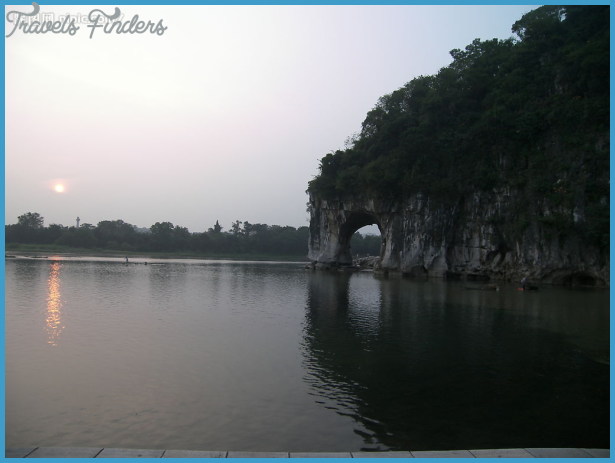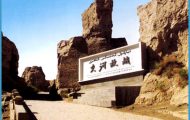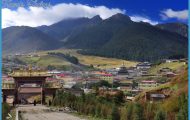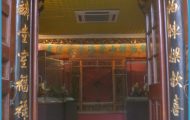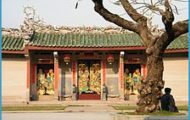A steep path of 306 steps leads up to the top ofthe Mount of Unique Beauty in the town centre. It is 152m/500ft high, and from the top there is a magnificent view over the town and the surrounding area. The peak is dominated by an arched edifice known as The Southern Gateway to Heaven (Nantian Men). There are a number of caves on the mountain slopes, the inner and outer walls of which are covered in inscriptions from the Tang (618-907) and Qing (1644-1911) eras. To the south ofthe mountain, on the land belonging to the teacher training college, stands the Wangcheng, once the residence ofthe King of Jingjiang. All that remains are parts ofthe walls together with some balustrades and staircases.
Whirlpool Hill Iies300m/330ydtotheeastofthe Peakof Unique Beauty.The iron bell weighing 2V2 tonnes and the giant Pot of a Thousand Men are from the Dingyue Si temple of Diecaishan and date from the Qing period (1644-1911).
The Cave of the Returned Pearls lies at the foot of the Mountain of the Gentle Waves. According to legend, this was the lair of a dragon which owned a glowing string of pearls. A fisherman found them and took them, but he was plagued by pangs of conscience and finally returned the jewels to their owner. In the cave will be found the touchstone on which swordsmen tested their weapons. On Qianfo Yan Rock can be seen over 200 Buddhist sculptures and inscriptions from Tang and Song era (7th 13th c.).
The Mountain of Piled Brocades (or Mountain of Cinnamon Trees, because these evergreen trees once grew on its slopes) has a number of peaks and stands in the north ofthe town on the banks ofthe beautiful Lijiang river. It was a popular place with visitors more than 1000 years ago, largely because of the many pavilions and monuments which public and literary figures had erected here; unfortunately, none of these have survived the ravages of time. In the caves can be found Buddhist sculptures and inscriptions from the Tang and Song period (7th 13th c.). From the highest peak, Mingyue Fen (223m/732ft) there is a picturesque view ofthe town and its surroundings.
Seven Star Park lies in the east of the town. It covers an area of 40ha/100 acres, making it Guilin’s largest public park, and derives its name from its seven hills, the layout of which is similar to that of the stars in the Great Bear constellation. At the entrance will be found the Bridge of Flowers (Huaqiao) from the Song period (960-1279). The four northernmost hills, the Putuoshan, contain a number of caves, including Seven Star Cave. The three southern peaks form the Yueshan Hills. The woods containing stone inscriptions, mostly from the Song period, will be found interesting.
Camel Hill, 22m/72ft high, is in the south-east of the park; as its name suggests, it looks rather like a sitting dromedary. Peach trees are scattered over it, and these give it a pink tinge in spring. The Municipal Zoo at its western foot is open to visitors.
Seven Star Cave, formed from a subterranean river-bed, measures 800m/880yd in length overall and is made up of several grottos, both small and large, linked by zig-zag passageways. It has attracted visitors for centuries. The largest cave is 43m/140ft wide and 27m/89ft high, with a constant internal temperature of about 20°C/68°F. Its walls are covered with writings and poems by famous calligraphers, statesmen and men of letters, the oldest inscription dating from the year 590.

